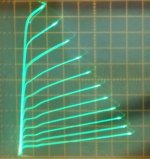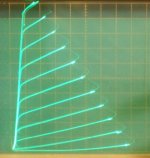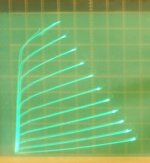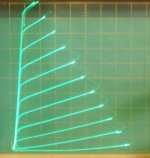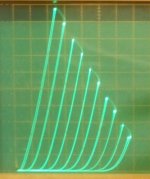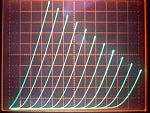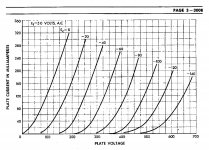Is there much of a sonic difference between older (Williamson, GEC, Western,etc.)circuits than new (Tubelab, Millet, etc.)?? Is there really any inherent superiority or just personal preference? Do any circuits stand out above the rest?
Thanks for the information.
With such a broad question, that is what all answers will boil down to. To answer it fully, you would have to write a book.
And then someone else would write a different book!
The quick answer is that there is not much difference between the performance of a good design from 60 years ago and a good design from today, and any changes would be near or below the limit of likely human perception. There may be huge differences between a poor design of then and a poor design of today, as tastes in sound effects have changed somewhat: then people wanted 'good tone' but today they want 'slam' or 'soundstage'.
The quick answer is that there is not much difference between the performance of a good design from 60 years ago and a good design from today, and any changes would be near or below the limit of likely human perception. There may be huge differences between a poor design of then and a poor design of today, as tastes in sound effects have changed somewhat: then people wanted 'good tone' but today they want 'slam' or 'soundstage'.
Is there much of a sonic difference between older (Williamson, GEC, Western,etc.)circuits than new (Tubelab, Millet, etc.)?? Is there really any inherent superiority or just personal preference? Do any circuits stand out above the rest?
I am no expert, but I have built 10+ different 300B SE amps for the last 25+ years.
To me, biggest sonic difference came from (1) output transformers and input or interstage transformer if there's any in the amp (2) tubes (3)power supply design. Even simplified WE91 style circuit and Tubelab constant current circuit did not sound much different.
I don't have proper measurement electronics, so I do not know about difference in THD, SNR, etc.
After reading this site for years and years, and remembering back to the days when slide rules were the bomb in calculating things for amplifiers… I'd say that most of the differences between the eras can be boil'd down to:
• economics of various parts
• esthetics of design choices
• fads and magical elixers
• sentimentality and purism
Economics is one of the 'real deals': inductors used to be cheap, now they're expensive. Capacitors used to be really expensive, now they're cheap. Commodity tubes used to be dirt-cheap, now they can be scores of Euros. Even solid-as-tanks resistors once were pretty expensive, then they got cheap. Now they're even cheaper, but no longer 'tanks'.
esthetics clearly is an evolving thing, but it is also does guide generational differences. Today, we have open-frame blue underlit tubes; people use gas regulators not for their practicality, but their telltale glow. Bespoke volume controls are au currant, but once it was silver-plated speaker banana jacks, and before that bakelite knurled knobs.
fads & magic has always been part of what defines the generational differences. Today the Aikido design (which is admittedly both novel and esthetically cool) is on the wane. Its still very good, but times change. Once it was SRPP (which no one can remember what the acronym means/meant). Before that there were cascodes and fairly unique common-grid designs lifted from the HAM folks. Times change. E'n the decision as to whether input or middle stages benefit from pentodes versus triodes (or FETs!) is contentious… and fluid.
sentimentality remains perhaps one of the most influential factors though. If we are honest, building tube equipment is a man's hobby, mostly. (Sorry, Katje! - you're extraordinarily special!) Just like rebuilding turn-of-the-century automobiles and trucks. (19th to 20th, not the recent one!). Design choices are very often rooted in original spec sentiments, then gradually 'honed' with decidedly later innovations. Sometimes openly, sometimes hidden below the hood.
Intellectual avocation (not in the bullet list) is also another significant factor. Many of the people who congregate here have both remarkable intellectual talent and the desire to dig deep, deep into the analytic underpinnings of abstract electronic engineering and physics theory. For many, just to understand, to 'grok', and to then design from the ground up - NOT depending on copying others' designs - is hugely satisfying. Evidence that all that studying, noodling, calculating, driving the wife nuts, is worth it.
Just like (mostly) gentlemen who are maybe bankers or attorneys, or civil construction generals, but who in private life have cultivated a life-long hobby of fine cabinetry and woodworking, or musicianship, or photography and printmaking, or crafting something really oblique like fountain pens, or cuckoo clocks, or distilling whiskey on a tiny scale. It consumes the wan hours of a lifetime, and the results, the creations are tangible. Evidence of intellect. Good stuff.
And guess what … all those things are also influenced by the prior 4 bullets.
So that's what influences the generation-to-generation designs of … everything.
GoatGuy
• economics of various parts
• esthetics of design choices
• fads and magical elixers
• sentimentality and purism
Economics is one of the 'real deals': inductors used to be cheap, now they're expensive. Capacitors used to be really expensive, now they're cheap. Commodity tubes used to be dirt-cheap, now they can be scores of Euros. Even solid-as-tanks resistors once were pretty expensive, then they got cheap. Now they're even cheaper, but no longer 'tanks'.
esthetics clearly is an evolving thing, but it is also does guide generational differences. Today, we have open-frame blue underlit tubes; people use gas regulators not for their practicality, but their telltale glow. Bespoke volume controls are au currant, but once it was silver-plated speaker banana jacks, and before that bakelite knurled knobs.
fads & magic has always been part of what defines the generational differences. Today the Aikido design (which is admittedly both novel and esthetically cool) is on the wane. Its still very good, but times change. Once it was SRPP (which no one can remember what the acronym means/meant). Before that there were cascodes and fairly unique common-grid designs lifted from the HAM folks. Times change. E'n the decision as to whether input or middle stages benefit from pentodes versus triodes (or FETs!) is contentious… and fluid.
sentimentality remains perhaps one of the most influential factors though. If we are honest, building tube equipment is a man's hobby, mostly. (Sorry, Katje! - you're extraordinarily special!) Just like rebuilding turn-of-the-century automobiles and trucks. (19th to 20th, not the recent one!). Design choices are very often rooted in original spec sentiments, then gradually 'honed' with decidedly later innovations. Sometimes openly, sometimes hidden below the hood.
Intellectual avocation (not in the bullet list) is also another significant factor. Many of the people who congregate here have both remarkable intellectual talent and the desire to dig deep, deep into the analytic underpinnings of abstract electronic engineering and physics theory. For many, just to understand, to 'grok', and to then design from the ground up - NOT depending on copying others' designs - is hugely satisfying. Evidence that all that studying, noodling, calculating, driving the wife nuts, is worth it.
Just like (mostly) gentlemen who are maybe bankers or attorneys, or civil construction generals, but who in private life have cultivated a life-long hobby of fine cabinetry and woodworking, or musicianship, or photography and printmaking, or crafting something really oblique like fountain pens, or cuckoo clocks, or distilling whiskey on a tiny scale. It consumes the wan hours of a lifetime, and the results, the creations are tangible. Evidence of intellect. Good stuff.
And guess what … all those things are also influenced by the prior 4 bullets.
So that's what influences the generation-to-generation designs of … everything.
GoatGuy
And then someone else would write a different book!
The quick answer is that there is not much difference between the performance of a good design from 60 years ago and a good design from today, and any changes would be near or below the limit of likely human perception. There may be huge differences between a poor design of then and a poor design of today, as tastes in sound effects have changed somewhat: then people wanted 'good tone' but today they want 'slam' or 'soundstage'.
Very correct...basically the old schematics remain true..Having built many powerful MI/HiFi UL amps from 1960 to ?; the biggest significant change on my bench is boxes of under performing New Edition made power tubes, poor materials, poor annealing/outgassing and worst, their sales flannel claim the performance as their predecessors could do; but no; the 6550 is a good example of a tube NOT to push. That dupe tube is closer to a 6L6, though there are many who use 6L6's way above 470V B+ in UL.
Electrolytic caps have definitely improved; as has the understanding of the CCS in designs; but those of us who use GNFB, will soon realise how accommodating and powerful the closed loop is, in trimming so many evil parameters. Component tolerances, Hum & noise; thd; damping factor; and so on.
I suffer from Tinnitus; but can still hear what'ain't right....
rich
The old advice, or admonishment, to "linearize first, before applying feedback" has entered a new dimension:
1) old grid 1 drive
2) new (g2 and g1 hybrid or "Crazy drive")
No amps using it yet however. Will someday be realized.
(after doing taxes, clearing deadly trees from nearby river for kayakers, after clearing brush from some property I need to sell, to pay those taxes, after solving high blood pressure problem .....) Well, maybe next year.
1) old grid 1 drive
2) new (g2 and g1 hybrid or "Crazy drive")
No amps using it yet however. Will someday be realized.
(after doing taxes, clearing deadly trees from nearby river for kayakers, after clearing brush from some property I need to sell, to pay those taxes, after solving high blood pressure problem .....) Well, maybe next year.
Attachments
Last edited:
No amps using it yet however. Will someday be realized.
I still reckon the enhanced triode mode that Tim deP used back in the mid 90s was a form of hybrid drive. Just not enough round tuits to work out what he did.
"I still reckon the enhanced triode mode that Tim deP used back in the mid 90s was a form of hybrid drive."
That's just g2 drive alone. Nothing new about that. Certainly not triode like curves either.
1) g2 drive
2) Crazy drive
3) g2 connected to plate, frame grid "triode"
4) real triode, 300B
5) perfect "triode", g2 connected to plate
That's just g2 drive alone. Nothing new about that. Certainly not triode like curves either.
1) g2 drive
2) Crazy drive
3) g2 connected to plate, frame grid "triode"
4) real triode, 300B
5) perfect "triode", g2 connected to plate
Attachments
Last edited:
Is there much of a sonic difference between older (Williamson, GEC, Western,etc.)circuits than new (Tubelab, Millet, etc.)?? Is there really any inherent superiority or just personal preference? Do any circuits stand out above the rest?
I think the saying "different strokes for different folks" applies here. With so many different types of speakers available, there is by necessity a wide range of amplifiers/circuits to suit the need. High power for electrostatics, B&Ws, etc. and flea power for Altecs, JBL, etc. And medium power for the rest? This would just cover one basic part of your query.
With such an open ended question are you just trolling the forum to create a ruckus?
Last edited:
The best of the best is what I was interested in on a comparison basis. Fast diodes and SS current sources were not available long ago. As for your trolling comment it seems you might be "The Troll" as everyone else has made an intelligent, sincere response without raising the trolling question. If you have nothing good to offer just ignore my thread.I think the saying "different strokes for different folks" applies here. With so many different types of speakers available, there is by necessity a wide range of amplifiers/circuits to suit the need. High power for electrostatics, B&Ws, etc. and flea power for Altecs, JBL, etc. And medium power for the rest? This would just cover one basic part of your query.
With such an open ended question are you just trolling the forum to create a ruckus?
Crazy Drive,
I have a home custom design of Push Pull 6DQ5 sweep tubes running Crazy Drive with the resistor ratios suggested by smoking amp. This amp makes in excess of 40 watts rms and does sound very good. That said, I am not sure it sounds better than my own custom home designed and built Push Pull 6BQ5 ultra linear amp that makes 13 watts rms. My hearing suffers from high frequency loss and is not what it used to be. Still the new crazy drive amp sounds very good to me. Mickeystan 🙂
No amps using it yet however. Will someday be realized.
I have a home custom design of Push Pull 6DQ5 sweep tubes running Crazy Drive with the resistor ratios suggested by smoking amp. This amp makes in excess of 40 watts rms and does sound very good. That said, I am not sure it sounds better than my own custom home designed and built Push Pull 6BQ5 ultra linear amp that makes 13 watts rms. My hearing suffers from high frequency loss and is not what it used to be. Still the new crazy drive amp sounds very good to me. Mickeystan 🙂

Are you using any local Fdbk (or global) to tame the output Z? What level of idle current was needed for the tubes to clear up crossover?
"I am not sure it sounds better than my own custom home designed and built Push Pull 6BQ5 ultra linear amp that makes 13 watts rms."
The 1st question needing to be answered yet for this scheme, is if the loss in stage gain (for local Fdbk use) using g2 drive or Crazy Drive is compensated for by the lower initial tube distortion. Crazy Drive requires less drive than g2 drive and is more linear than g2 drive, that much is clear. So the run-off is between g1 drive and Crazy Drive. I strongly suspect that higher harmonics are reduced more than the loss of stage gain using Crazy Drive, but an FFT test would really be needed to settle the issue. The reduced drive requirement of Crazy Drive versus g2 only drive is much safer for the tube also.
Of course, if one uses local Fdbk back to the driver stage grids or cathodes, then Crazy Drive almost certainly comes out ahead with some high gm driver tubes to boost the local loop gain. (12HL7 $1)
The other question needing an answer is how smooth is the zero crossover between tubes? I suspect it is similar to g1 drive, since at low signal level, g1 is mainly providing the control. Bad crossover would definitely sound bad. So Crazy Drive seems to be doing OK here with the 1st amp.
The reason it is an issue, is Crazy Drive seems to maintain a constant effective gm over almost the full current range of the tube. (great for SE use) That would lead to gm doubling in the overlap region for P-P, which would cause dist. Close investigation of the Crazy Drive plate curves however, does show that the gm eventually drops off at very low current, so a constant gm sum in a modest overlap region is looking possible.
Last edited:
Is there much of a sonic difference between older (Williamson, GEC, Western,etc.)circuits than new (Tubelab, Millet, etc.)?? Is there really any inherent superiority or just personal preference? Do any circuits stand out above the rest?
All tube circuits had effectively been invented by about the mid to late fifties. Topology-wise, nothing new since then. What smart folks like George at Tubelab and Pete Millett among others do, is employ solid state devices in supporting roles such as current source/sinks and source followers.
Tubes and passive parts such as chokes and IT's can still be used effectively where required in these supporting roles, but using SS devices as substitutes can in many instances provide better (technical) performance while being easier/cheaper to implement.
So, your question becomes more one of implementation through the use of modern parts than one of circuit design in and of itself. In this case I'm sure you'll receive as many opinions as are respondents to this thread while keeping in mind that not all listeners equate better technical performance with subjectively better sound.
Some amps back in 1960'Th were great, but they did not have modern electrolytic capacitors, now they are smaller and lighter per capacitance and voltage. Also, modern MOSFETs make it cheap to stabilize voltages and remove hum. Plus, I found some solutions that were not used in amps before (speaking of "nothing new topology - wise since then") ;-) At least, I could patent optical anti-clipping compressor that senses currents of screen grids of output tubes, Gyrator load of triodes, and directly coupled driver with servo to the screen grid from the tail of LTP to the screen grid of the input tube. ;-)
Also, military transmitting tubes are available and awfully cheap today.
If to compare WE amps made for moving pictures, they assumed 8 kilo Hertz the top frequency that is needed. I design my amps for 20 Khz and higher.
Also, military transmitting tubes are available and awfully cheap today.
If to compare WE amps made for moving pictures, they assumed 8 kilo Hertz the top frequency that is needed. I design my amps for 20 Khz and higher.
Last edited:
I have very little personal experience with tube amps, but everything I've read or heard in the past two decades jibes with what most have said here - everything about audio using tubes was known by the 1950s, and most if not all of it can be found in the Radiotron Designer's Handbook, 4th Edition.
imho, the marantz 7 preamp is the most clone desired preamp, till today i get request to build them..
12ax7, high open loop gain, global negative feedback, i am amazed at why people like them...
there are many versions/clones coming out of hongkong and china...
12ax7, high open loop gain, global negative feedback, i am amazed at why people like them...
there are many versions/clones coming out of hongkong and china...
I have very little personal experience with tube amps, but everything I've read or heard in the past two decades jibes with what most have said here - everything about audio using tubes was known by the 1950s, and most if not all of it can be found in the Radiotron Designer's Handbook, 4th Edition.
Yes, for those who have very little personal experience it may be true, but for those who has experience with SS and tube amps, both fields were greatly improved since then.
I posted my examples right before.
- Status
- Not open for further replies.
- Home
- Amplifiers
- Tubes / Valves
- OLD vs NEW tube amplifier circuits
